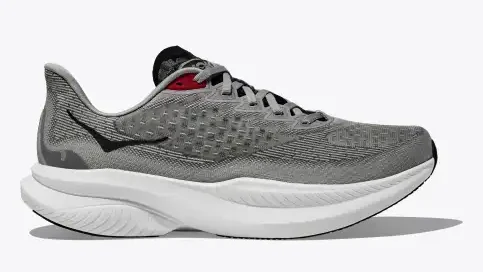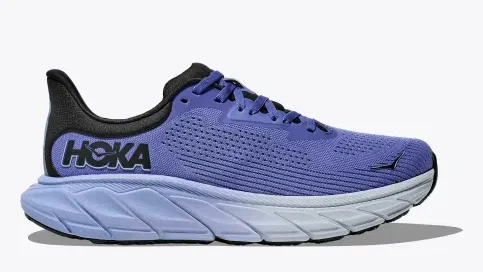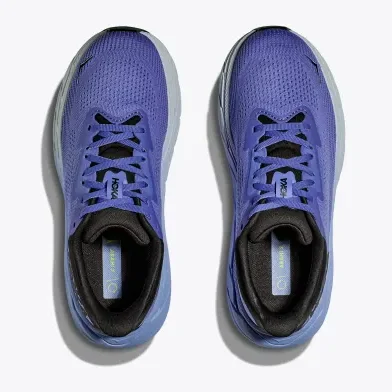Lace up, running enthusiasts! We’re diving into a head-to-head comparison of two popular Hoka models: the Mach 6 and the Arahi 7. Both shoes promise to elevate your running experience, but which one will meet your needs? Whether you’re a casual jogger or a seasoned marathoner, this analysis will help you decide which shoe deserves a spot in your running arsenal. Let’s explore these cutting-edge running companions.
Key Takeaways:
1. The Hoka Mach 6 is designed for neutral runners seeking responsiveness, while the Arahi 7 caters to those needing stability. This fundamental difference guides their respective technologies and performance characteristics.
2. Both shoes showcase innovative materials, with the Mach 6’s super critical foam offering a responsive ride and the Arahi 7’s J-Frame™ technology providing targeted support for overpronators.
3. For activities beyond running, such as walking and all-day standing, the Arahi 7 generally edges out the Mach 6 due to its more plush cushioning and stability features, potentially reducing fatigue.
4. The Arahi 7 may be a better choice for runners with plantar fasciitis, offering more targeted support and cushioning that could help alleviate associated pain and discomfort.
5. With only a $5 price difference, both shoes offer competitive value. The final choice depends on the individual’s specific needs for stability, cushioning, and intended use across various activities.
Comparison Table between Hoka Mach 6 And Hoka Arahi 7:
| Feature | Hoka Mach 6 | Hoka Arahi 7 |
|---|---|---|
| Launched In | 2023 | 2023 |
| Stability | Neutral | Moderate to Stable |
| Flexibility | Moderate | Moderate |
| Sizing | True to size | True to size |
| Weight | 8.20 oz | 8.10 oz |
| Cushion | Responsive to Balanced | Balanced to Plush |
| Outsole | Strategic rubber coverage | Zonal rubber, Durabrasion |
| Midsole | Super critical foam | J-Frame™, Compression molded EVA |
| Upper | Creel jacquard | Supportive flat-knit |
| Retail Price | $140 | $145 |
Features Comparison:
1. MATERIAL: outsole, insole, upper sole
The Hoka Mach 6 and Arahi 7 showcase distinct material choices that cater to different running preferences. The Mach 6 features a strategic rubber outsole coverage, providing durability and traction where needed most.
Its midsole utilizes super critical foam, a cutting-edge material known for its responsiveness and energy return. The upper is crafted from a creel jacquard material, offering a balance of breathability and support.


In contrast, the Arahi 7 boasts a zonal rubber outsole with Durabrasion rubber, enhancing durability in high-wear areas.
The midsole incorporates Hoka’s proprietary J-Frame™ technology and compression-molded EVA, delivering a supportive yet cushioned ride. The upper features a supportive flat-knit construction, providing a secure and comfortable fit.
2. Durability:
When it comes to durability, both shoes are built to last, but they approach longevity differently. The Mach 6’s strategic rubber placement targets high-impact areas, potentially extending the shoe’s lifespan. Its super critical foam midsole is designed to maintain its properties over time, resisting compression and breakdown.
The Arahi 7, with its Durabrasion rubber outsole, is engineered for enhanced wear resistance. The J-Frame™ technology in the midsole not only provides stability but also contributes to the overall structural integrity of the shoe. The supportive flat-knit upper is likely to hold up well against the rigors of regular use.
3. Fit:
Fit is crucial for any running shoe, and both models aim to provide a secure and comfortable experience. The Mach 6 features a streamlined collar foam package and a dual internal gusset, which work together to create a snug, adaptable fit. The anatomical tongue further enhances comfort and reduces pressure points.
The Arahi 7 approaches fit with a focus on support. Its flat-knit upper is designed to provide a more structured fit, potentially beneficial for runners who need additional stability. The dual gusset and plush tongue contribute to a secure and comfortable feel, while the extended heel pull aids in easy on-and-off.
4. Cushioning:
Cushioning is where these two models diverge significantly. The Mach 6 offers a more responsive cushioning experience with its super critical foam midsole.
It’s designed to provide a firmer, more efficient push-off, making it suitable for runners who prefer a more connected feel with the ground.
The Arahi 7, on the other hand, leans towards a more balanced to plush cushioning profile. The compression-molded EVA midsole, combined with the J-Frame™ technology, offers a softer, more protective ride.
This setup aims to provide comfort over longer distances while still maintaining responsiveness for toe-off.
5. Stability:
Stability is a key differentiator between these two models. The Mach 6 is classified as a neutral shoe, featuring a symmetrical bed of cushion without additional prescriptive technologies.
This design philosophy allows for natural foot movement and is ideal for runners with neutral pronation or those who prefer minimal interference with their gait.


In contrast, the Arahi 7 is designed with stability in mind. The J-Frame™ technology is specifically engineered to prevent excessive inward roll or overpronation without overcorrecting the runner’s gait.
This makes the Arahi 7 a suitable choice for runners who need mild to moderate pronation control or those seeking extra support during their runs.
6. Value for Money:
Considering the retail prices, with the Mach 6 at $140 and the Arahi 7 at $145, both shoes offer competitive value. The Mach 6 provides excellent value for neutral runners seeking a responsive,
Lightweight daily trainer that can double as a race-day shoe. Its versatility and performance-oriented features justify the price point.
The Arahi 7, while slightly pricier, offers added value for runners needing stability features. The inclusion of the J-Frame™ technology and the more supportive upper construction may make it worth the extra $5 for those requiring these specific features.
Additionally, its potential suitability for both running and walking increases its versatility and overall value proposition.
Performance Comparison:
For Walking:
Both shoes perform well for walking, but with different strengths. The Mach 6 offers responsive cushioning and a lightweight design (8.20 oz), making it comfortable for extended walks. Its streamlined collar foam package and anatomical tongue prevent friction during long walks.
The Arahi 7 has a slight edge for walking, with more plush cushioning and stability features. Its supportive flat-knit upper and J-Frame™ midsole provide excellent support and comfort, potentially reducing fatigue. At 8.10 oz, it’s marginally lighter than the Mach 6.
For Running:
Both shoes excel in running but cater to different needs. The Mach 6 is a versatile, everyday trainer with race-day potential. Its super critical foam midsole offers a responsive ride, especially at faster paces. The lightweight design and 5mm drop promote a natural running gait.
The Arahi 7 is geared towards runners needing stability. Its J-Frame™ technology provides guidance without being intrusive, ideal for mild to moderate overpronators. It offers balanced cushioning suitable for various paces and distances, with a matching 5mm drop.
For Standing All Day:
For all-day standing, both shoes offer comfort differently. The Mach 6’s responsive cushioning might feel energizing initially but may be less comfortable over extended periods. Its lightweight nature (8.20 oz) could reduce overall fatigue.
The Arahi 7 potentially has an advantage with its plush cushioning and stability features. The compression molded EVA midsole and J-Frame™ technology offer a stable, cushioned platform that may better distribute pressure and reduce fatigue. The supportive upper could also contribute to overall comfort during extended standing.
For Plantar Fasciitis:
Both shoes offer features that could potentially provide relief for plantar fasciitis, but the Arahi 7 might have a slight edge. The Mach 6’s responsive cushioning and anatomical design offer support and comfort. Its streamlined collar foam package and anatomical tongue may reduce stress on the plantar fascia.
The Arahi 7’s stability features and plush cushioning could be particularly beneficial. Its J-Frame™ technology provides targeted support, potentially reducing strain on the plantar fascia. The balanced cushioning offers impact absorption that could alleviate pain associated with this condition.
Conclusion: Which Is Better For You
Choosing between the Hoka Mach 6 and Arahi 7 ultimately depends on your specific needs and preferences as a runner or walker. The Mach 6 is an excellent choice for neutral runners seeking a responsive, versatile shoe for both daily training and faster-paced runs.
Its lightweight design and efficient cushioning make it ideal for those who prioritize speed and ground feel. On the other hand, the Arahi 7 shines for runners needing mild to moderate stability, offering a balance of support and cushioning that’s suitable for various activities, including walking and all-day wear.
If you have specific concerns like plantar fasciitis or require extra support, the Arahi 7 might be the better option. Ultimately, both shoes represent the quality and innovation Hoka is known for, ensuring that whichever you choose, you’ll be taking a step in the right direction.

